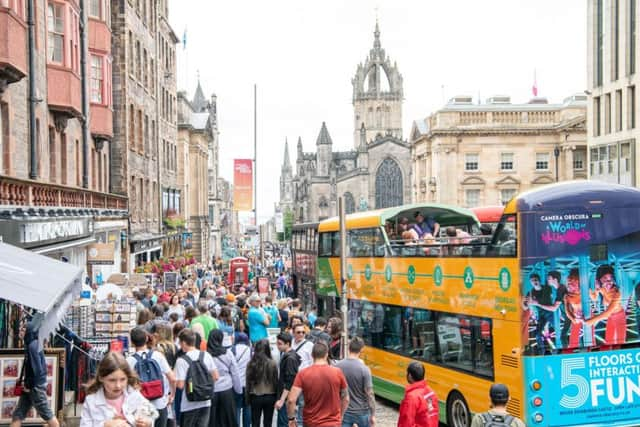Edinburgh’s Disneyfication or preservation in aspic: How the debate is heating up – Brian Ferguson
On the basis that it’s never too early for some festive cheer, I dipped into The Scotsman’s archives for a reminder of my favourite story from the run-up to last Christmas. It took me instantly back to an evening of twinkling lights at the Balmoral Hotel when the great and good of Edinburgh’s tourism industry gathered at the end of another bumper year for business.
What could – and perhaps should – have been a celebratory event instead set the tone for a firestorm of festive debate thanks to an incendiary speech from Gordon Robertson, chair of Marketing Edinburgh, which was hosting the event, during which he defended the city against growing accusations of “Disneyfication”.


Advertisement
Hide AdRobertson turned a festive flamethrower on the critics he felt were unfairly maligning the industry and holding back the city with their “wearing” negativity – including newspaper commentators, heritage bodies, residents, businesses and “politicians of all hues and administrations”.
‘Defending’ city against over-tourism
In a warning that now seems an ominous harbinger of doom for both the industry and his own organisation, Robertson asked: “How have we, in this great industry, allowed others to push this ‘tourism bad’ narrative and lose the battle of demonstrating the benefits that tourism brings?” Robertson also criticised “those that rail against Disneyfication and are generally down on Edinburgh’s increasing popularity”, insisting they would rather the city was “preserved in aspic”.
A year on from Robertson’s declaration, it is fascinating to observe how the schisms at the heart of public debate in Edinburgh have opened even further.
Marketing Edinburgh’s chief executive John Donnelly went to war with the city council after being confronted with a massive funding cut, then resigned after winning only a partial reprieve. Mr Robertson and his board quit suddenly last month after failing to win backing for a rescue plan.
Its fate seemed sealed in the spring when the council agreed a new tourism policy pledging to strike “the right balance between a thriving tourism economy and the quality of life for residents”.
Yet there are growing demands from event organisers to use and develop public spaces like Princes Street Gardens. The city’s summer and winter festivals attract growing numbers of visitors and this week’s news about Jenners is only the latest indicator of demand to open new hotels in the city centre.
Advertisement
Hide AdThis is happening against a backdrop of growing debate about the future of Edinburgh that should be of interest to anyone whose livelihood depends on tourism, events or the arts. The spring saw the launch of Citizen, a new campaign to “defend” the city against over-tourism, gentrification, property developers, privatisation of public space and “festivalisation”.
Last weekend saw Edinburgh World Heritage, which bore the brunt of Mr Robertson’s barbs at the Balmoral, stage a gala dinner to kickstart its own campaign to safeguard the future of the city with the release of a short film featuring new ambassadors Alexander McCall Smith, Ian Rankin and Sir Tom Devine.
Advertisement
Hide AdAll this leaves Adam McVey, the youngest ever leader of the city council, with the unenviable task of trying to unite the Scottish capital and find a way forward. Let’s face it, if the city was to advertise for an honest broker to heal the current divisions it would be entitled to describe it as the toughest job in Scotland.